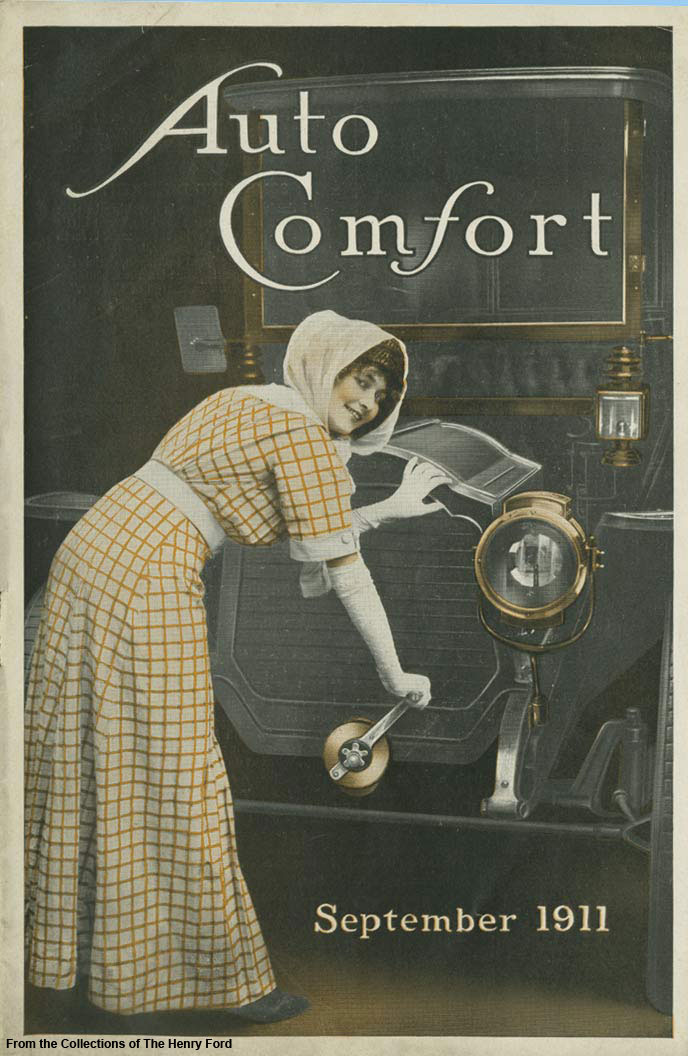So before I chucked the starter motor on my Mini I decided to have a play!
Some history: before starter motors, folk with massive forearms and no concern for putting their back out or breaking a wrist off, used to hand crank engines to start them!
 |
| This is how it started, women posing with cars! A bit conservative in them days compared today! |
Anyway he's me tinkering:
To disengage the starter from the crankshaft, a method of connecting and disconnecting the motor must be used. In steps the sidekick to the motor: the solenoid.
In this video you can see that the motor has a cog on it that moves to engage the teeth on the flywheel, that in turn is connected to the crankshaft of the engine.
The solenoid moves the cog along the the shaft of the starter motor to engage those teeth and turn the drive shaft. Not only does it serve as a mechanical aid, the solenoid also acts as a contactor for the start motor itself Given that the amount of power it needs to turn the engine over is huge, a bog standard relay won't cut it, it needs beefy thick contacts to handle the current.
This is what happens when you turn the ignition key into the spring back position: your completing the circuit for the solenoid which in turn moves the gear for the starter motor into position on the fly wheel, and then the solenoid completes the circuit for the motor.
I could go into things like cold cranking amps (CCA) and so on for current into the motor from the battery, but that would make this blog longer than it should so I'll just leave a link for Wikipedia on battery terms
Anyway, I want to thank Top Gear Transmissions for a good job and excellent service. Cheers muchly!
Stay Safe!
No comments:
Post a Comment